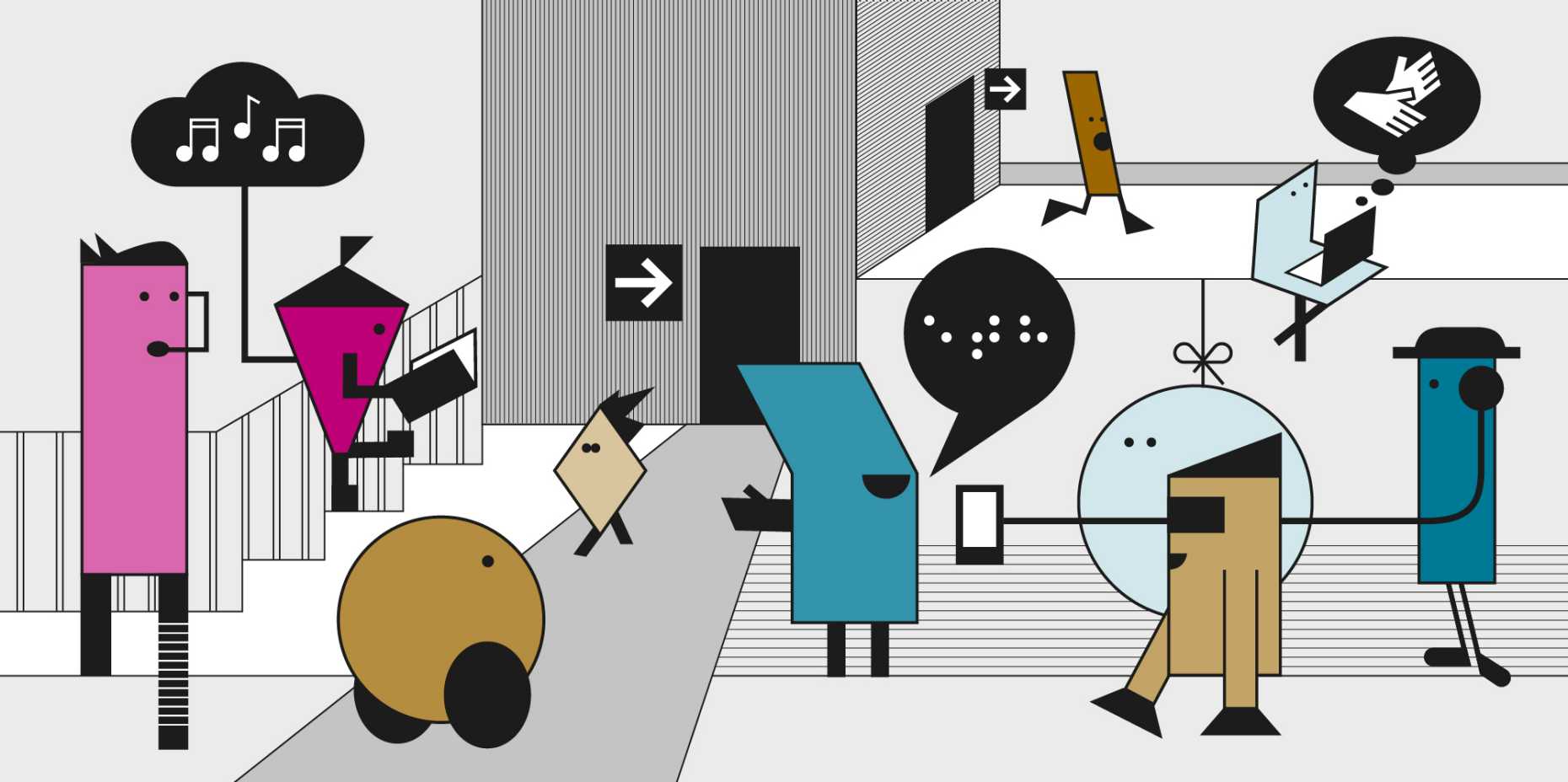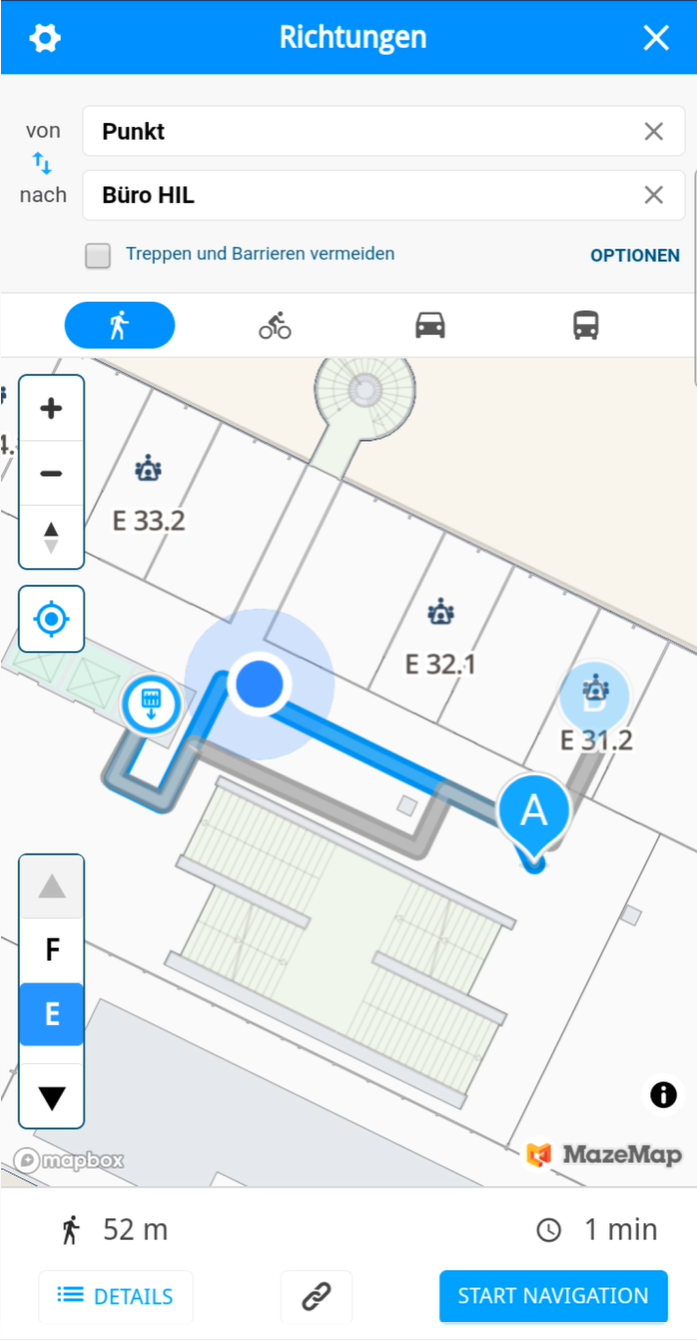Preparations for barrier-free navigation, alarm systems and evacuation procedures at ETH
The “Barrier-free at ETH Zurich” programme was launched in early 2021. At present, the university is still some way from reaching this goal. Nevertheless, a variety of subprojects are now well on the way to making ETH as accessible as possible over the next few years.

Time’s running out and the lecture is about to start, but you still have no idea how to get to the right room. What’s more, you’re dragging a heavy suitcase because afterwards you’re heading off to a conference or on holiday.

In the future, a new app will help out. Under the leadership of IT Services, two pilot tests for a comprehensive indoor navigation system are now running as part of subproject 12 “Generate barrier-free guidance”. This new navigation app will explicitly show barrier-free routes between and within ETH buildings so that users can avoid having to lug heavy baggage up the stairs and take the lift instead. To support this technology, a further 3,000 Bluetooth beacons are to be installed over the next few years, in addition to the 6,500 already in place. Mobile devices can use these beacons to determine their precise position and display this as a blue dot on a map.
A new post on the IT Services Blog provides a detailed introduction to Indoor navigation for barrier-free guidance at ETH.
Benchmark project for barrier-free alarm systems and evacuation procedures
In the event of an emergency, there need to be clear procedures in place governing how people with a disability or impairment are to be alerted and evacuated. To alert people with impaired hearing, alarm systems must be not only audible but also visual – featuring flashing lights, for example. Similarly, it must be ensured that people with impaired mobility have ample time to exit the building, or it should be established what assistance they would need to do so.
Under the leadership of SSHE, subproject 6 will analyse the situation at ETH over the coming months and draw up appropriate provisions. Interviews conducted with people affected as well as with representatives from other institutions, companies and public authorities have revealed an astonishing lack of knowledge in Switzerland about the requirements in this sphere, and about the technology available and compliance with legal provisions. Up to now, reference projects for this topic have been carried out only in certain areas. Ideally, ETH will be able to serve as a benchmark for other institutions once it has successfully completed subproject 6 and drawn up general guidelines.
Barrier-free at ETH Zurich
In autumn 2020, the Executive Board gave the green light to the implementation of the barrier-free project: over the course of the next few years, people with disabilities or people with special needs – whether students, lecturers, researchers, staff or visitors – should benefit from greatly improved access to ETH buildings and services.
The proposed measures will be implemented in 14 sub-projects in three categories: “Construction, Building usage and Architecture”, “Organisation, Process and Culture” and “Technology, Communication and Teaching”.
Further information about the programme and the 14 sub-projects can be found on the programme website.
Comments
No comments yet